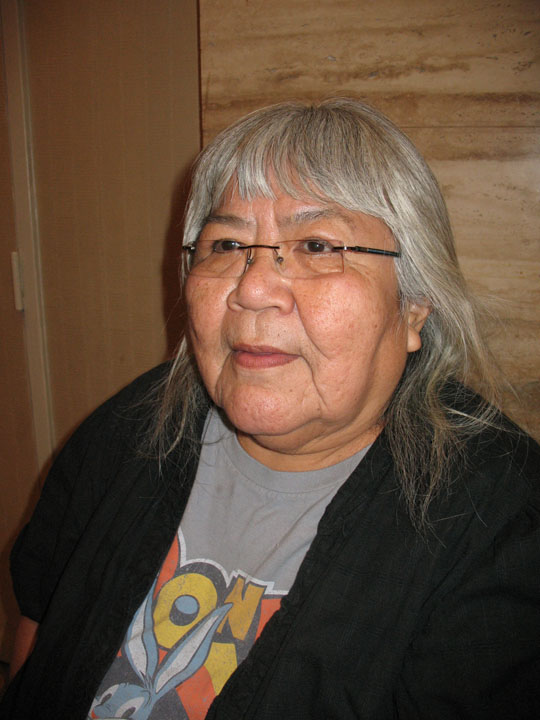Sarah’s tale of Arctic warming
Observations from one remote village as its climate changes
MIAMI — Sarah James remembers playing outdoors as a child even in the dead of winter. It often hit -70 degrees Fahrenheit, although not for prolonged periods. But she and the other kids, tired of being house-bound, just bundled up in snow suits and boots made from caribou skins. Even such frigid temps never put life — or play — on hold, recalls this 67-year-old resident of Arctic Village, Alaska.
Today, winter cold snaps seldom dip below -40 degrees, she says. And snows, that used to begin falling in August or September, now typically arrive in late October or November.
Over a half-century or so, her town of some 150 Athabascan Indians has watched as the formerly extreme but fairly predictable climate in this amazingly remote region of inland Alaska has become warmer and more erratic. Overall, that’s definitely not been a change for the better, James says.
She ventured to South Florida this week — and the Society of Environmental Journalists’ annual meeting — to describe what it’s like to weather life on the frontlines of climate change.
James grew up on a flat tundra range above the Arctic Circle. In her youth, the local vegetation was several inches to a few feet tall. And just inches down, the soil was permanently frozen. No more. Cottonwoods and willows have migrated in, sending up trunks 10 feet high or more. Understory shrubs followed. With the taller, woodier vegetation came an influx of bears and beavers.
That at least has brought some benefits, James claims. Like more meat. In her community with no running water, no agriculture to speak of and no roads, people still largely live off of the land. That means eating caribou, moose, ducks, fish and small mammals. Including beaver.
The villagers catch game whenever it’s available, then smoke it or freeze it for meals throughout the rest of the year. Arctic Village built a huge solar-powered municipal walk-in freezer during the 1970s, about 24 feet on a side. It circulated a fluid that was chilled as it ran through the frozen soil and then released that cold to keep the stored meats rock solid. But after two decades this cold locker had to be abandoned. The melting permafrost wasn’t keeping the chiller chilly enough. Today, James says, people use diesel-powered electricity to run home freezers. And it’s expensive, since that diesel fuel all arrives by plane.
Another byproduct of the melting permafrost: erosion of shorelines along lakes and creeks.
Always fairly drought-ridden, inland Alaska increasingly has also been plagued by fires — especially now that the invasion of trees had added extra tinder. Smoke associated with the fires can shut down air traffic through the area. And that can delay deliveries of fresh produce and fuel — or medical evacuations of the sick or injured. Arctic Village is one of the most remote spots in North America, James says. And the closest hospital, she notes, is in Fairbanks, a two-hour flight away.
For decades, scientists have been explaining that any global warming will be exaggerated in the polar regions, especially the Arctic. But reading about that in dry research papers and reports by the Intergovernmental Panel on Climate Change are quite different from listening to a woman describe how the norms of climate in her part of the world have been turned topsy turvy. “Sometimes in rains in January,” James says, “or snows in July. We just don’t know what to expect from one day to another,” she told me across the breakfast table this morning.
“We’re people of the caribou,” the quiet-voiced woman explains. “We believe our people were put on this Earth to protect our caribou.” And to date, she maintains, her Gwich’in tribe of some 8,000 individuals — spread across 15 villages in northeastern Alaska and northwestern Canada — think they’ve been managing pretty well.
In 1988, “our tribal elders came together to protect the coastal plain of the Arctic National Wildlife Refuge, the birthing ground of our caribou,” she says. Even back then, she says, “they were concerned about the many changes that were happening. They were talking about climate change and warming — and that’s one reason they organized against oil and gas development.”
Her community is still arguing against it. It’s also one themes James plans to talk about during an October 21 session, here, at the SEJ meeting about climate impacts on indigenous communities.








